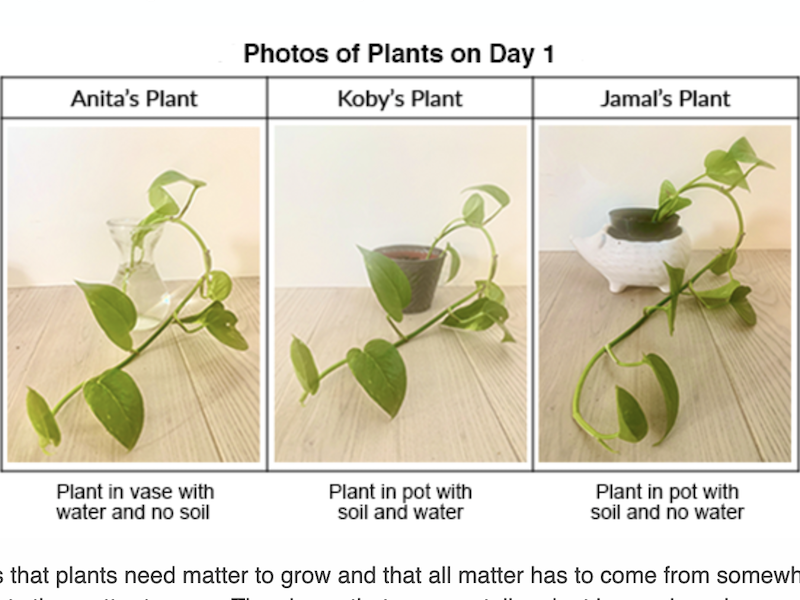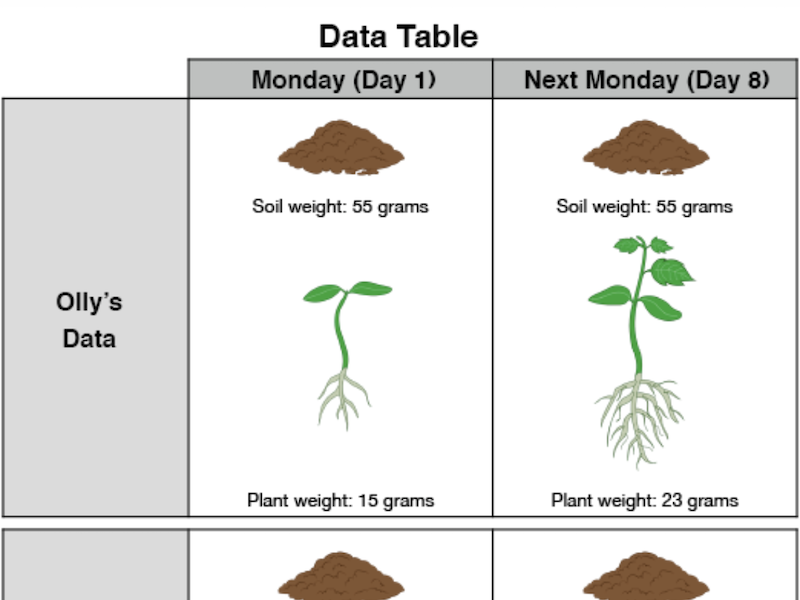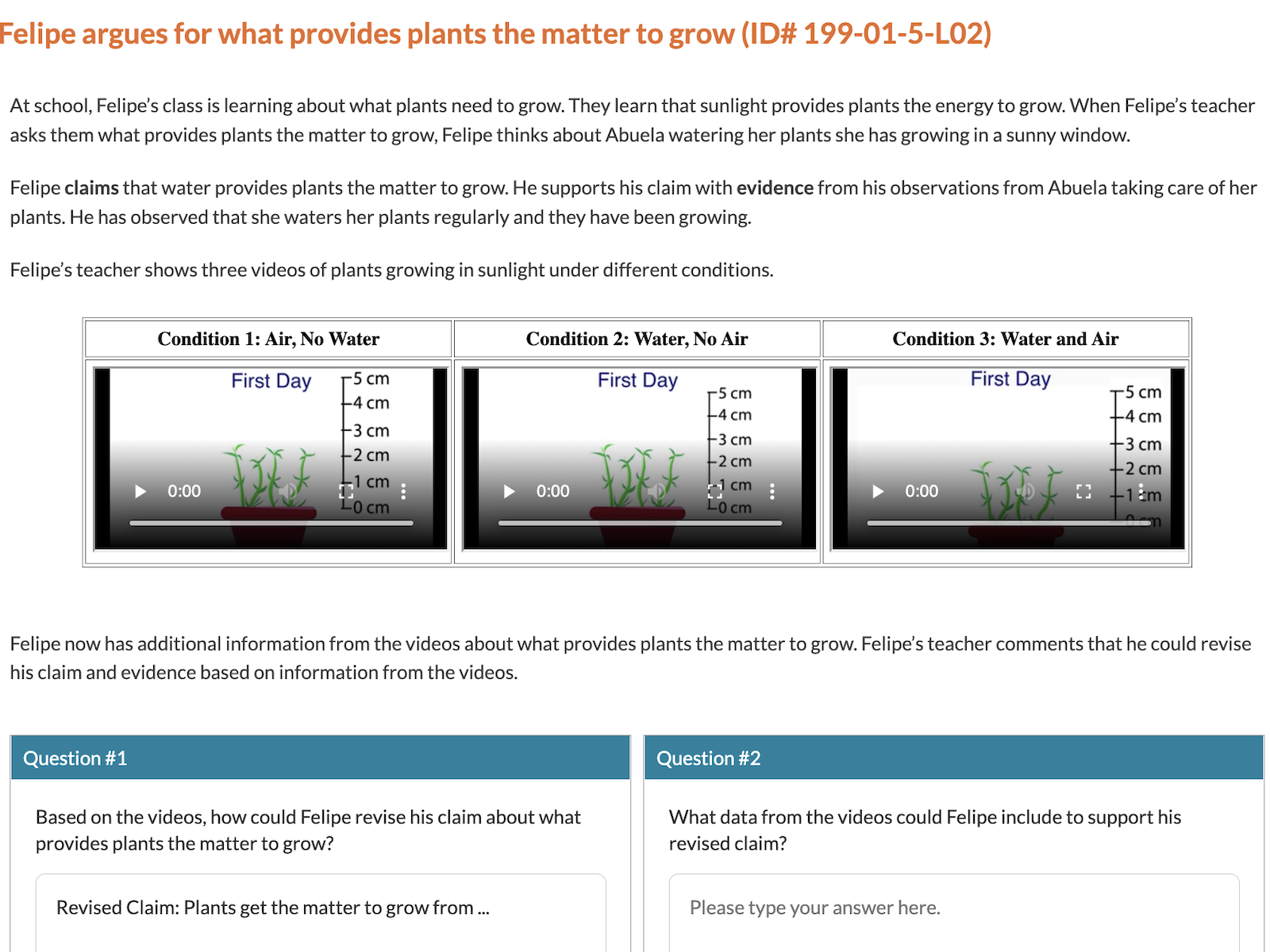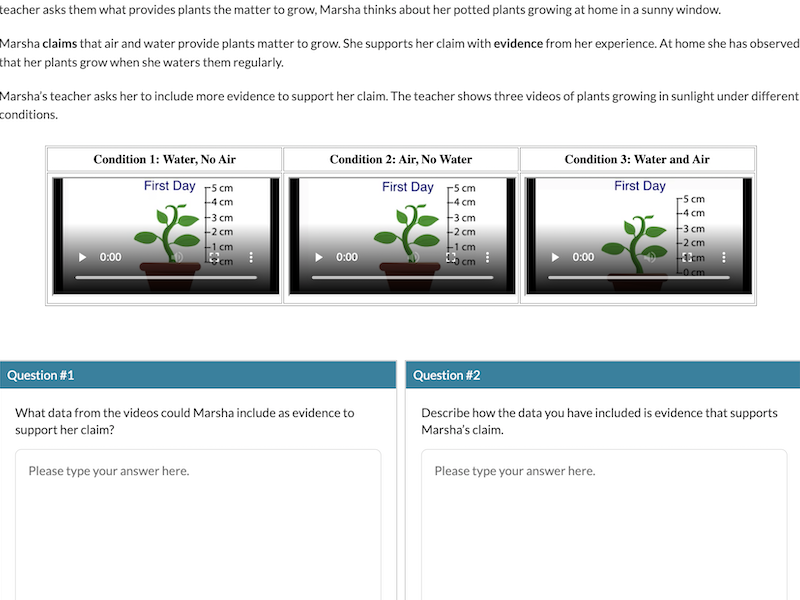Growing Plants

Assessment
Shared by: Liz
0 Recommend
What is this task about?
Students analyze data about houseplants to determine where plants get the matter they need to grow.
Students identify patterns in data regarding plant growth, and then use that information to figure out where the plants are getting the matter to grow. They engage in the practice of analyzing and interpreting data related to the core ideas about where the matter in plants comes from and how matter moves between the living and nonliving parts of the world. The patterns that students identify within the data can serve as evidence to support their arguments about where plants get the materials (matter) they need for growth, as called for in the PE.
The three dimensions of this task are
- DCI: LS1.C: Organization for Matter and Energy Flow in Organisms
- SEP: Analyzing and Interpreting Data
- CCC: Energy and Matter
See Everything you need to know about 5-LS1-1 to learn more about this performance expectation.
Click on the tabs above to learn more about ways to use this task with your students, understand their responses, and what you can do next.
Implementation Options
When To Use
- Before or During Instruction – Use this as part of your instruction about this content.
- After Instruction – Assess what your students have learned about this content.
Pick a Paired Task!
This task pairs well with Vegetable Garden, another task developed for the same learning performance.
Alternatively, you might choose a task developed for a different learning performance, or one that uses a different SEP or CCC.
Other Recommended Pairings:
Visit the Discussion Boards to talk about this task with other teachers.
Understanding Student Responses
Students look for evidence that they are noticing patterns in the plant growth data and relating it to the growing conditions. Did they consider both the number of leaves and the length of the stem? Did they consider the growing conditions of each plant (watered or not)?
View the rubric.
View the rubric.



